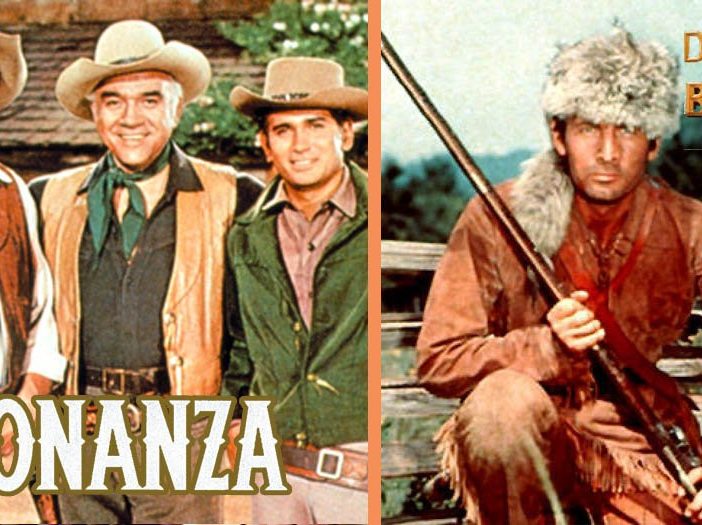
UPDATED 9/22/2020
“It’s like the Wild West, the internet,” said comedian Steven Wright. “There are no rules.” Remember Zorro and The Lone Ranger? What about the iconic shootout in The Life and Legend of Wyatt Earp or the Ponderosa ranch from Bonanza? Just a few of the favorite TV Westerns of all-time!
Let’s take you back to the Wild West with the best Classic TV Western series from arguably the two best decades the U.S. has ever experienced: the 50s and 60s.
1. ‘Daniel Boone’ (1964 to 1970)
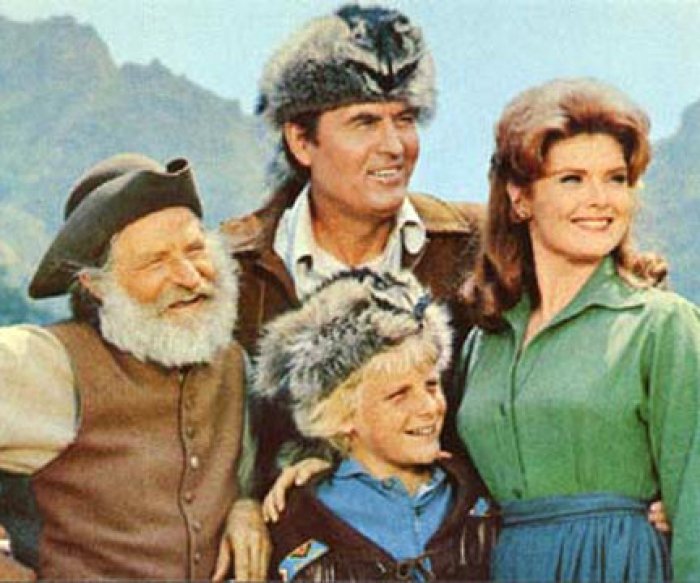
Daniel Boone was a follow-up to the Davy Crockett series brought to you by Walt Disney way back when (actually, between 1964 and 1970) and featured adventures of the explorer Daniel Boone in the 1770s. NBC was where the series aired for six seasons with 165 episodes. Interestingly, Fess Parker played both Davy Crockett and Daniel Boone (obviously not in the same series — though that could have been really interesting).
Observes Boyd Magers over at westernclippings.com, “Boone struggled in the ratings during the first three years, but under new line producer Barney Rosenzwerg [who would producer Cagney & Lacey in the 1980s] as of 1967, the series saw better writing and production values with many episodes becoming more relevant, often centering on slavery and race relations.”
2. ‘Sugarfoot’ (1957 to 1961)
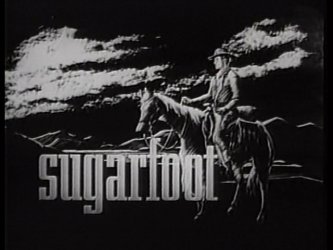
Sugarfoot shares the story of law school graduate Tom Brewster (Will Hutchins). He has a lack of cowboy skills that earn him the nickname “Sugarfoot” (sort of like “Tenderfoot,” but he keeps on trying in the Wild West. The series started in 1957, running for four seasons and 69 episodes.
In an interview with the Western Clippings site, writer/producer Hugh Benson said that the show was designed “as a gentle itinerant cowpuncher who goes from place to place, but still has that law book [with him] … Someday he’s going to be an attorney.”
3. ‘The High Chaparral’
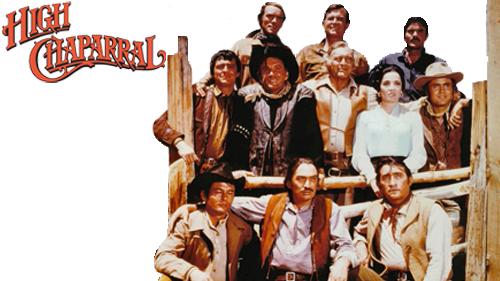
The High Chaparral is about the ranch in Arizona, run by the Cannon family who wants to raise cattle against the wishes of the locals. The Western aired in 1967, spanning four seasons and 97 episodes before getting canceled. Created by Bonanza producer David Dortort, who left that show so he could focus 100% on this one. When The High Chaparral was canceled, everyone expected him to return to Bonanza, but he retired instead.
4. ‘The Roy Rogers Show’ (1951 to 1957)
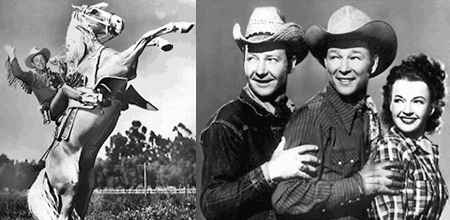
The Roy Rogers Show was about ranch owner Roy Rogers, his wife Dale Evans and the Eureka Cafe in the town of Mineral City. The Western only had one season and 23 episodes on NBC starting in 1951.
5. ‘The Lone Ranger’ (1949 to 1957)
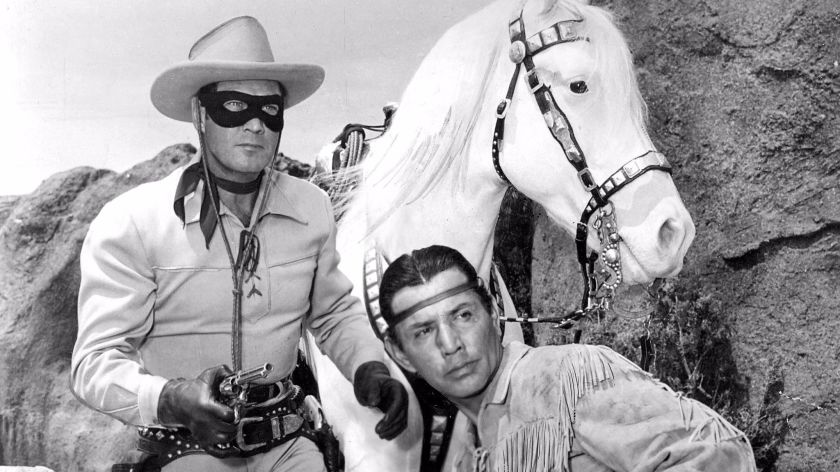
The Lone Ranger was about a man in a black mask (Clayton Moore) dedicated to helping others as he rides on his horse Silver across the Wild West, accompanied by an Indian companion, Tonto, played by Jay Silverheels. The series, packed with gunfights and streets brawls and upholding the slogan “Truth and Justice,” ran for 13 seasons on NBC beginning in 1949.
Details Magers, “After a highly successful 16-year run on radio, The Lone Ranger finally came to ABC TV on September 15, 1949 in the person of Clayton Moore. The owner of the property, George W. Trendle, seeing the success of Hopalong Cassidy, struck a deal with the longtime sponsor of the radio series, General Mills, to bring the masked man to TV.”
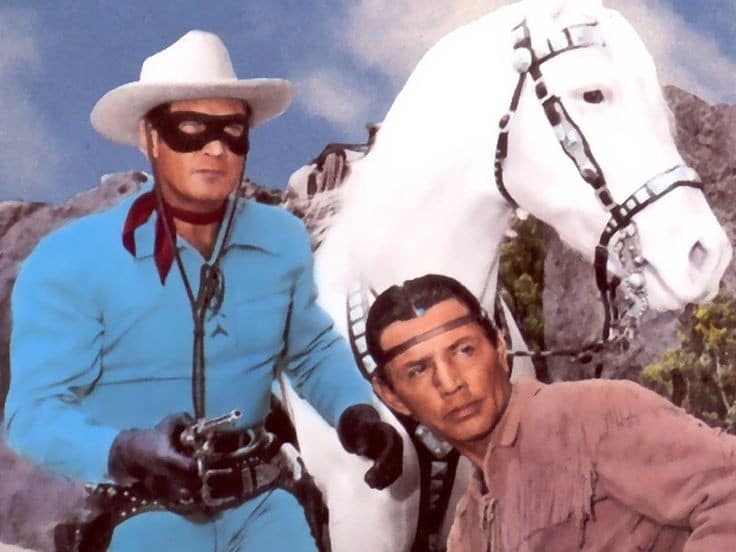
Moore played that masked man for the first two seasons (spanning 1949 to 1951), but left following a contractual (i.e. money) dispute. There was a season of reruns from 1951 to 1952, then actor John Hart was brought in for 52 episodes from 1952 and 1953. After a season of reruns, Moore was finally brought back for the rest of the series.
6. ‘The Wild Wild West’
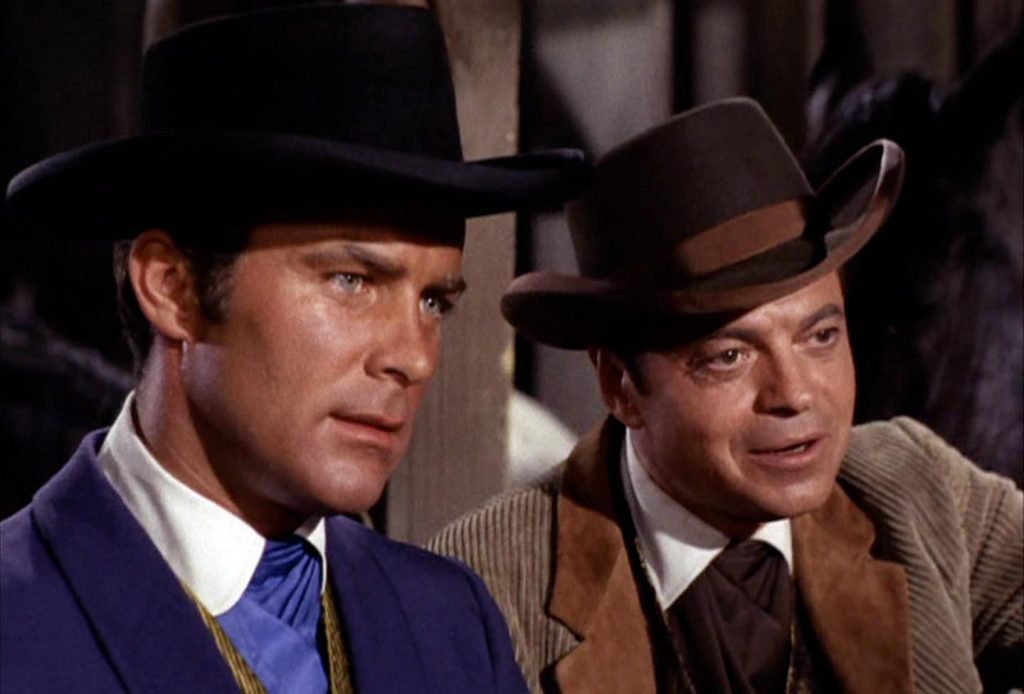
The Wild Wild West was just that — a story of two Secret Services agents, played by Robert Conrad and Ross Martin — working for the government. Created as a sort of Old West James Bond adventure, the two leads (as well as the villains they went up against) used a variety of funny and cool gizmos and gadgets. The action-packed, science fiction western started in 1965 and continued for four seasons and 104 episodes.
Conrad recounted a story of Martin appearing on Johnny Carson’s Tonight Show and saying, “Robert does his own stunts, and I do my own acting.” When Conrad was asked whether or not he was offended by the comment, he laughed, “I applauded it, it was the truth. I did my acting tongue in cheek. I didn’t take any of it seriously. The last year, I didn’t even read the scripts, I just read my part and it worked.” The two would be brought back together for a pair of reunion TV movies.
7. ‘The Life and Legend of Wyatt Earp’ (1955 to 1962)

A fictionalized drama inspired by history, The Life and Legend of Wyatt Earp stars Hugh O’Brian in the title role, a character who uses his pistols and many sidekicks to enforce the law — culminating in the famous shootout at the location known as the O.K. Corral. The series began in 1955 and went on for six seasons and 227 episodes.
“The Earp show had too many cast members to mention,” muses DavidGreenland, author of many books on Classic TV Westerns, “the most notable being co-star Morgan Woodward. The overall quality of the series was occasionally erratic in the early years, but it ended on a high note with the famous gunfight at the OK Corral, and it may well have continued for at least one more season had Hugh O’Brian not decided to move on.”
8. ‘Zorro’ (1957 to 1959)

Zorro (with Guy Williams, later of Lost in Space) tells the tale of the masked swordsman Don Diego de la Vega, who opposes corrupt tyrants in Spanish California under the identity of Zorro. It began in 1957 and was canceled after three seasons and 82 episodes.
Writes Bill Iadonisi at the magicpixels.com site, “The dashing and swashbuckling Zorro was already well-known in the movies, the role recreated by Tyrone Power and Douglas Fairbanks. The requirements for the role was specially set by Walt Disney himself. For the role of Don Diego de la Vega, the actor must be handsome, athletic looking and have a knowledge of fencing. Walt interviewed Guy himself, even telling him to grow a mustache ‘neither very long or thick.’ Guy received a very lucrative contract. Williams had finally arrived.” In the 1960s, he would star in the science fiction show Lost in Space.
9. ‘Laramie’ (1959 to 1963)
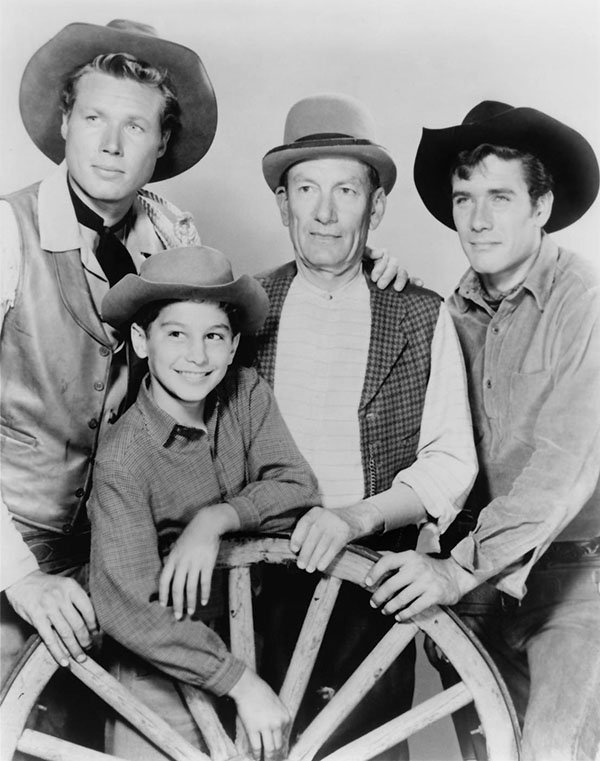
Laramie takes place in the 1870s in Wyoming, where Slim Sherman and his brother Andy try and run their father’s ranch after he dies. The brothers run a stagecoach station near Laramie with their friend, Jess Harper. The series, which highlighted the importance of friendship, aired for four seasons and 124 episodes starting in 1959.
10. ’26 Men’ (1957 to 1959)

26 Men told the true stories of rangers in Arizona around 1900. It began in 1957, but only lasted for two seasons — however, there were a whopping 78 episodes produced. Details Boyd Magers, “26 Men drew its title and storyline from the carefully documented exploits of the real 26 men who were Arizona Rangers, a group of volunteers founded in 1901 to enforce law in the almost lawless territory of 113,909 square miles. Their deeds became the basis of this series.”
When the show was airing, producer Russell Hayden commented, “We’re striving for authenticity and I think we’re getting it. Our whole series is being shot in the same region where the real Rangers once rode.”
11. ‘The Big Valley’ (1965 to 1969)
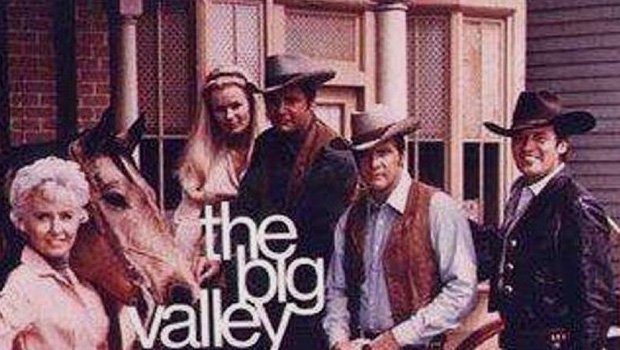
The Big Valley was about a wealthy American ranch family in California in the 1900s. Lee Majors, Richard Long and Barbara Stanwyck starred in this series which featured many harsh realities for viewers to relate to, despite the family’s huge fortune. The drama started out in 1965 on ABC and lasted four seasons. Commented Long to the media, “Part of the attraction of the series is that we are as a family not always right. We just do the best we can under the circumstances. No superheroes, just human beings. And that’s what people identify with.”
12. ‘Maverick’ (1957 to 1962)
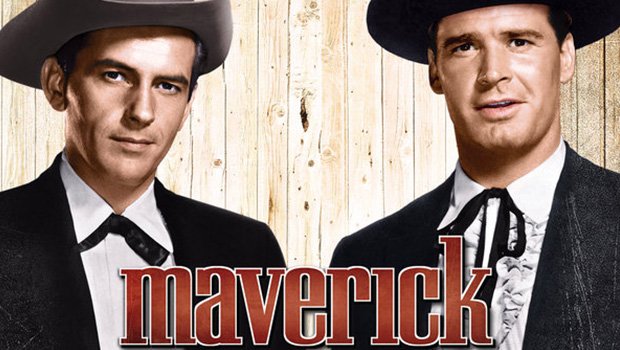
Maverick, starring James Garner as Bret Maverick and Jack Kelly as his brother, Bart, was about a family of gamblers who enjoyed gunplay and the ladies, somehow always finding themselves in danger. The series aired from 1957 to 1962 on ABC. “Maverick turned traditional TV Western themes inside out — all in the wink of an eye,” comments Magers. “Maverick was humorous without going over the top to make fun of Westerns or being crude about it as Blazing Saddles and others of that ilk did. It was the only Western able to make fun of other Westerns on the air.”
13. ‘Cheyenne’ (1955 to 1962)

Cheyenne takes place after the Civil War and focuses on the adventure of Cheyenne Bodie (Clint Walker), who roams the west picking fights, taking on bad guys and courting women. It premiered in 1955 and ran for seven seasons and 108 episodes.
“Although it notched seven seasons on the air, four in the Top 30, only 107 episodes of Cheyenne were produced from 1955 to 1962 because of a contract dispute between Clint Walker and Warner Bros,” says Greenland. “In fact, the show wasn’t seen at all from July of 1958 to September of 1959. (Of the eight Warner Bros TV Westerns, only four — Cheyenne, Sugarfoot, Maverick, Lawman — were solid hits.)
14. ‘Have Gun, Will Travel’ (1957 to 1963)
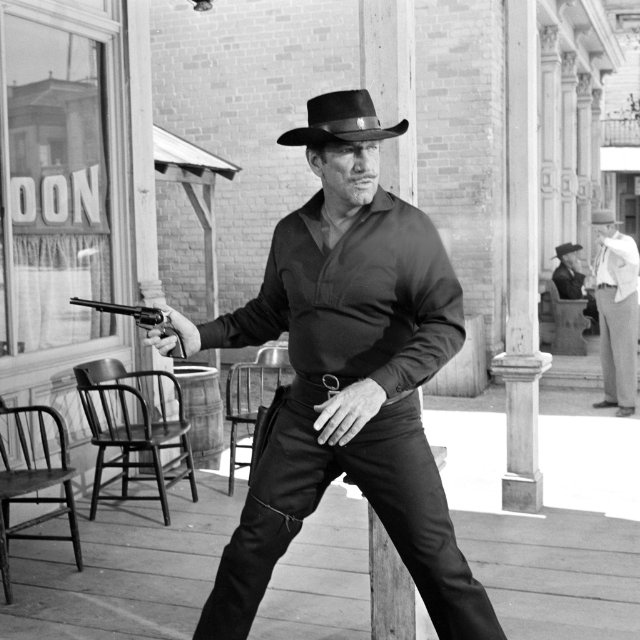
Have Gun, Will Travel was a Western drama focused on a hired gunman named Paladin, played by Richard Boone, from San Francisco, and his misadventures. It was action-packed — and philosophical — and aired on CBS starting in 1957 for six seasons.
“Starring Richard Boone, arguably the best actor to appear in a TV Western, Have Gun-Will Travel was the only series of the most successful nine to make the Top 30 every season during its six-year run,” Greenland points out. “Of its 226 episodes, there are remarkably few that can be considered routine or merely satisfactory.
In an exclusive excerpt from the book The Fifty-Year Mission: The Complete, Uncensored, Unauthorized Oral History of Star Trek, writer/producer Christopher Knopf says, “In the series, Boone plays Paladin, an erudite bon vivant in San Francisco who supports himself from bounty-hunter work, usually by Paladin discovering their plight through the daily newspaper with the help of his valet, Hey Boy, and sending them his iconic business card by mail or telegraph. Once on his way, the man in black is as skilled with a gun or in a brawl as he is at quoting Shakespeare or Dickens. More important, Have Gun was a morality play in which nothing was usually as it appears (a rare Western that depicted Native Americans sympathetically and not as outright villains), and Paladin often took the side of the underdog, even if it turned out they were not the ones paying his rather exorbitant fee.”
15. ‘Wagon Train’ (1957 to 1965)
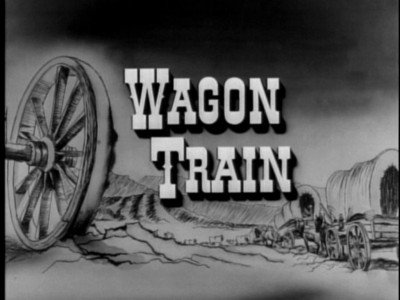
Wagon Train aired in 1957, but was born from the 1950 film Wagon Master. The lead was Major Seth Adams, played by Ward Bond and then replaced by John McIntire. After the cast change, the show went downhill. It was about a group of American settlers and travelers, and was canceled after eight seasons.
“Like The Virginian,” points out Greenland, “Wagon Train was faced with a number of losses among the regular cast across eight seasons (six in the Top 30) and 284 episodes (on both NBC and ABC), but having the same producer for its entire run ensured that the show was second only to Gunsmoke in maintaining a high level of excellence throughout. In addition to an abundance of famous guest stars (John Wayne even made a cameo appearance, though he was heard but not seen), the supporting cast included two former stuntmen (Frank McGrath, Terry Wilson) that proved to be more than competent actors and were the only two cast members to last all eight years. A seventh season that expanded to 90-minutes and filmed in color (before returning to an hour in black-and-white) was not as popular as hoped, but Wagon Train was always a reliable source of Western entertainment.”
16. ‘The Virginian’ (1962 to 1971)
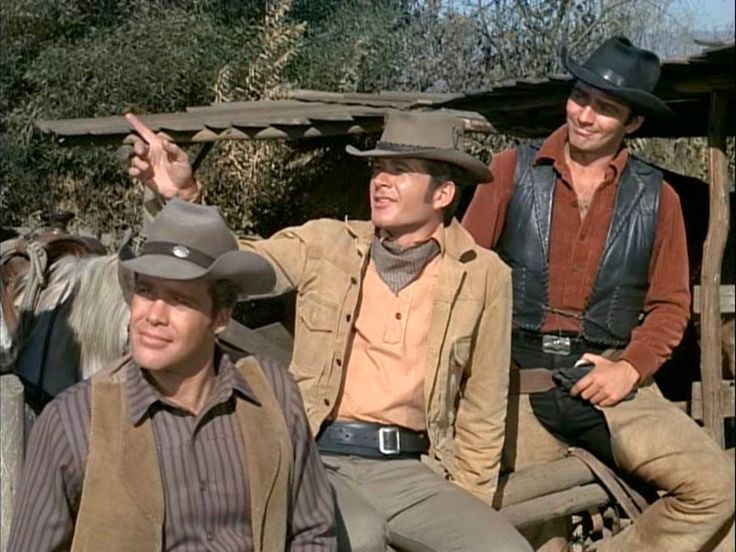
The Virginian (written by True Boardman) chronicles the events and reported stories that occurred at the Shiloh Ranch in Wyoming, which went through many owners, but a man referred to as the Virginian, and his associate Trampas, always remained. It premiered in 1962 on NBC and went strong for nine seasons.
Notes Greenland, “During its 250 episodes, the third longest-running Western in TV history — and the first of three to run 90 minutes — endured several cast changes (including five different top hands besides Doug McClure, and five different owners of the Shiloh ranch) — and was a Top 30 show for all but one of its nine seasons. A change in the title (The Men from Shiloh) and format (four stars rotating the lead each week, but never interacting) also altered the familiar flavor of the series, and though the ratings actually improved a bit in its last season, The Virginian in 1970 to 1971 was no longer what viewers had embraced since 1962.”
17. ‘The Rifleman’ (1958 to 1963)
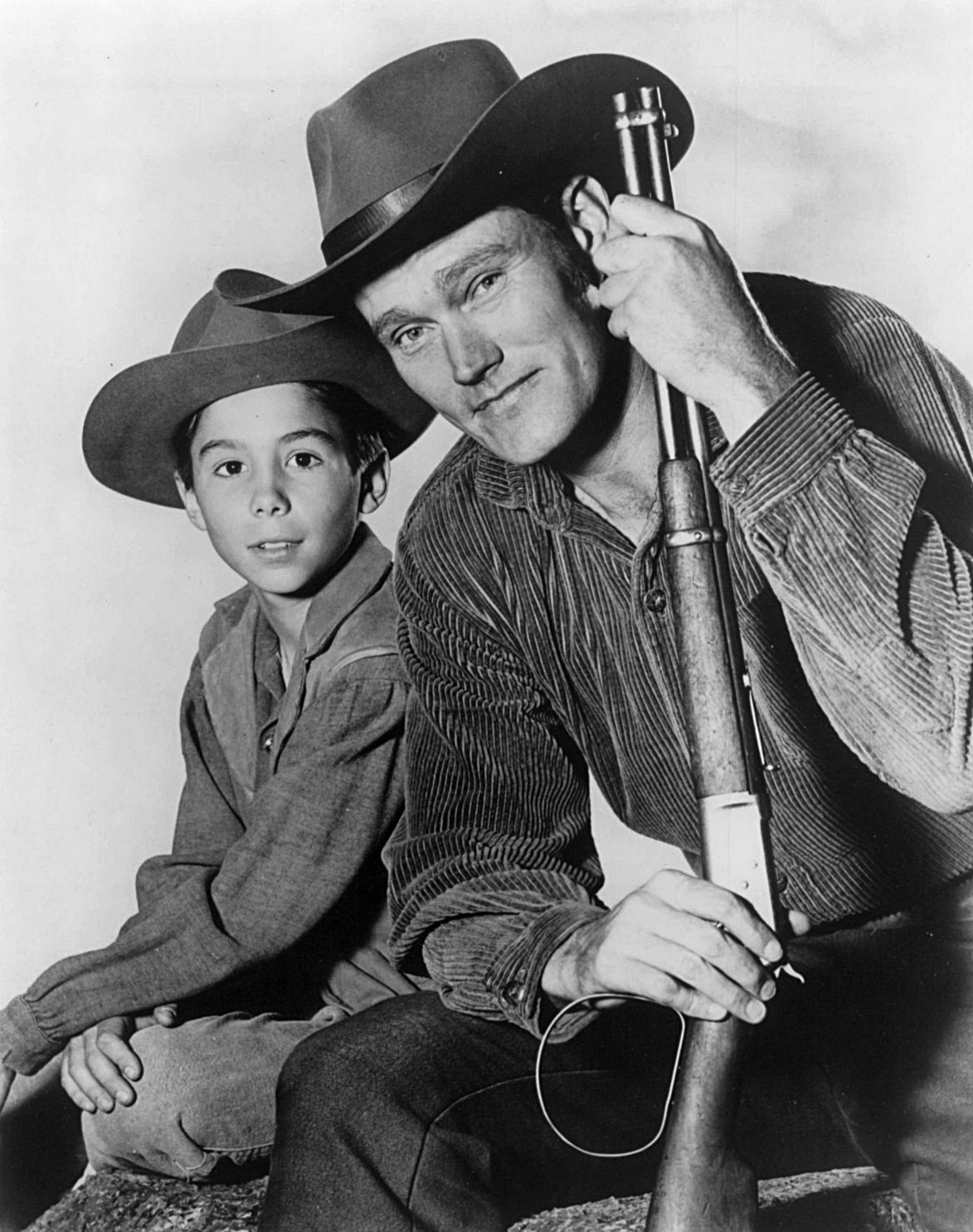
The Rifleman, set in the 1880s in the New Mexican town of North Fork, was a black-and-white series about a widowed father (Chuck Connors as Lucas McCain) and his son (Johnny Crawford as Mark) who live on a ranch — the father being a good shooter with a cool, modified rifle. It reached tens of millions of viewers and had five seasons from 1958 to 1963. It was, as Magers writes on westernclippings.com, a very different entry in the genre: “Widower Lucas guides his son with everyday life-lessons in the rough, untamed land, battling not only the elements, but outlaws and unsavory characters who inhabit the young territory. Chuck Connors’ Lucas regularly demonstrated to Mark, through example, the value of courage and justice, tempered with tolerance and understanding.”
18. ‘Bonanza’ (1959 to 1973)
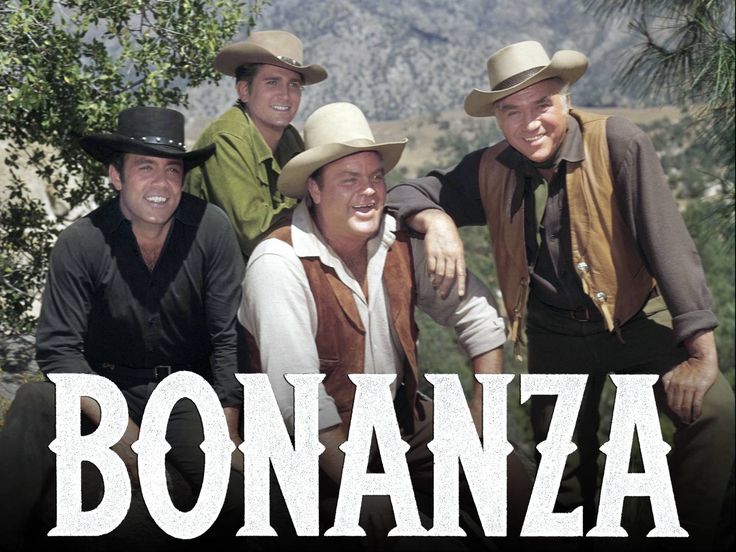
Bonanza, intended for family viewing, was set around the time of the Civil War in Nevada on a ranch called the Ponderosa, owned by Ben Cartwright (Lorne Greene) – a single father with three sons (played by Pernell Roberts, Dan Blocker and Michael Landon) . The episodes were mostly about family/community issues and the series lasted for a whopping 14 seasons beginning in 1959.
“The first color Western on television produced 430 episodes over 14 seasons and made the Top 30 a dozen times, the No. 1 show in the country for three of them,” says Greenland. “The death of Dan Blocker in early 1972 and a change from Sunday to Tuesday resulted in sinking ratings and NBC’s decision to cancel the series before the final season ended. Similar to Gunsmoke, several scripts were ready to shoot, but it didn’t matter. The famous Ponderosa ranch set was dismantled within days of the cancelation. Commenting on the network’s rude treatment of what had been one of its enormously popular shows, Lorne Greene lamented, ‘There was a lack of dignity.'”
19. ‘Rawhide’ (1959 to 1965)
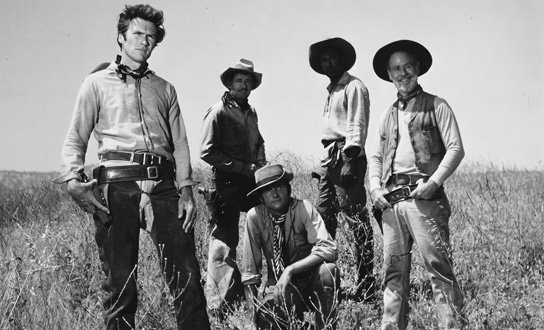
Rawhide featured Eric Fleming and a young Clint Eastwood. It was about trail boss Gil Favor and his band of drovers taking cattle from Texas to Kansas, and the misadventures they encountered. The drama aired on CBS in 1959 for eight seasons.
Greenland, who authored Rawhide: A History of Television’s Longest Cattle Drive, explains, “The show had the benefit of being launched at a time when Westerns were the dominant form of entertainment on television. It’s creator and first producer, Charles Marquis Warren, was an old pro of the genre and assembled a large and diverse cast that came off as more authentic than the typical Hollywood cowboy. While Rawhide was never the huge hit that Gunsmoke, Bonanza or Wagon Train were, six of its eight seasons were always consistently well done and highly entertaining.

“At first Eastwood’s portrayal of Rowdy Yates seemed to be above the status of tenderfoot, but not quite seasoned enough to be a top hand ready to take over as full-time trail boss,” he continues. “Eastwood himself referred to Rowdy as ‘idiot of the plains.’ By the time his character did indeed become trail boss in the final season, Yates had lost a lot of his youthful charm, smiling a lot less and coming off as downright fatalistic. This could very well have been due to the fact that he had just finished portraying the surly Man with No Name for the first time, in addition to the fact that he would have preferred leaving the series and having Eric Fleming continue as the lead.”
20. ‘Gunsmoke’ (1955 to 1975)
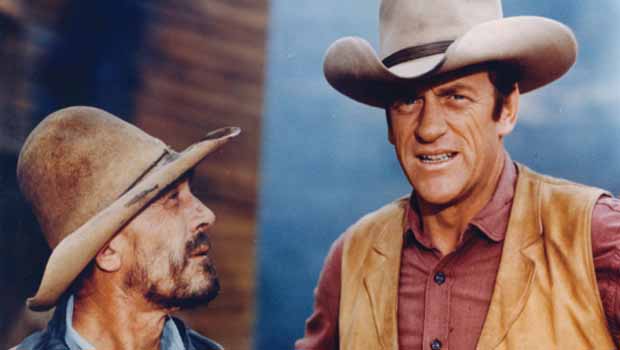
Gunsmoke was originally a radio series before airing on CBS, introduced by John Wayne. William Conrad starred as Marshall Dillon in the radio version, but was replaced by James Arness for television. The adult dramatic Western, one of the first, went on in 1955 and lasted for 20 years with half-hour episodes at first and then hour-long ones, featuring beloved characters like Miss Kitty Russell, Doc Adams, and Chester Goode.
Offers Greenland, “The authentic and consistently well-written Westerns produced 635 episodes (most an hour in length) and spent 18 of its 20 seasons in the Top 30, No.1 four times. CBS attempted to cancel the series after Season 12 (1966 to 67), but thanks to the intervention of network chairman William S. Paley (a fan of the show) and a switch from Saturday to Monday, it soared in popularity and ran for eight more years. In 1975, Gunsmoke was canceled at literally the last minute, with some episodes for a 21st season already written. (One eventually became the Harrison Ford feature Witness ten years later.) No doubt due in part to the absence of Amanda Blake after 19 years, the show had declined somewhat in the ratings, but there was no lapse in quality. The entire series is available on DVD as individual seasons or a massive box set.”
21. ‘Rango’ (1967)
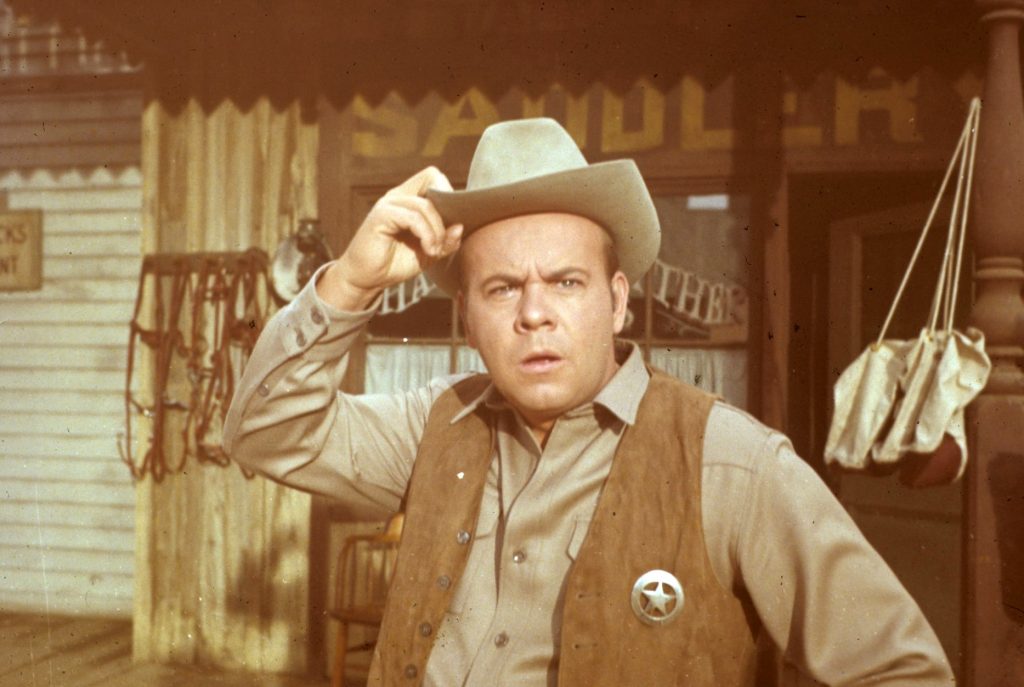
This Western comedy stars Tim Conway, who would next go on to The Carol Burnett Show, but at that point had just come off of McHale’s Navy. As a Texas Ranger, Rango is pretty much considered a loser, so he’s sent to what should be the quietest post he could have — but he still manages to get into trouble. It aired in 1967 on ABC.
22. ‘The Deputy’ (1959 to 1961)
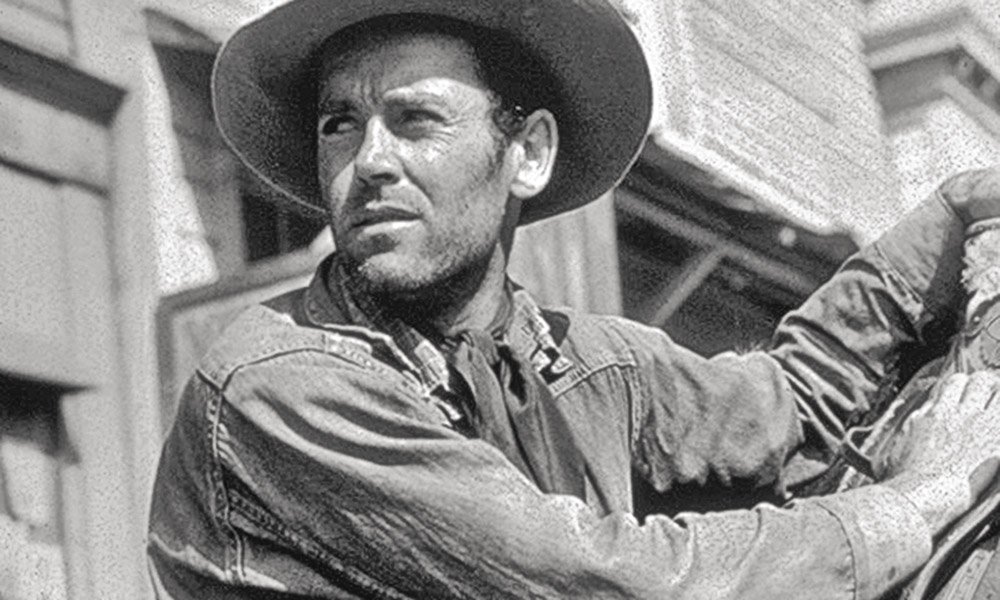
Most people never really recognized the name Norman Lear until All in the Family arrived on television in 1971. A little over a decade earlier, though, he was actually represented, along with co-creator Roland Kibbee, by The Deputy. Henry Fonda is Silver City, Arizona Territories’ Chief Marshal Simon Fry, who makes Clay McCord (Allen Case) his deputy. It’s an odd choice given that Clay is a storekeeper who doesn’t believe in gun violence and simply will not use his weapon. The show ran from 1959 to 1961.
In a 1960 interview with TV Guide, Henry Fonda, who surprised many people by appearing in a TV series, explained, “Being able to do plays on Broadway and films in Hollywood is like having your cake and eating it, too. My agents sort of talked me into doing television. It’s their job to put a buck in the bank for me. We looked at a lot of ideas, but when I first saw the pilot script for The Deputy, I figured this was the one I wanted to do. I like the character. When they fixed it so I only had to star in six full episodes, I liked that even better. They also fixed is so that I own 50% of the series. While I star in only six of the 39 episodes, I appear briefly in all the rest. This sounds like cheating, but it really isn’t. The brief appearances are done in such a way that you have the feeling this marshal, my character, is actively involved all the time.”
23. ‘Hondo’ (1967)
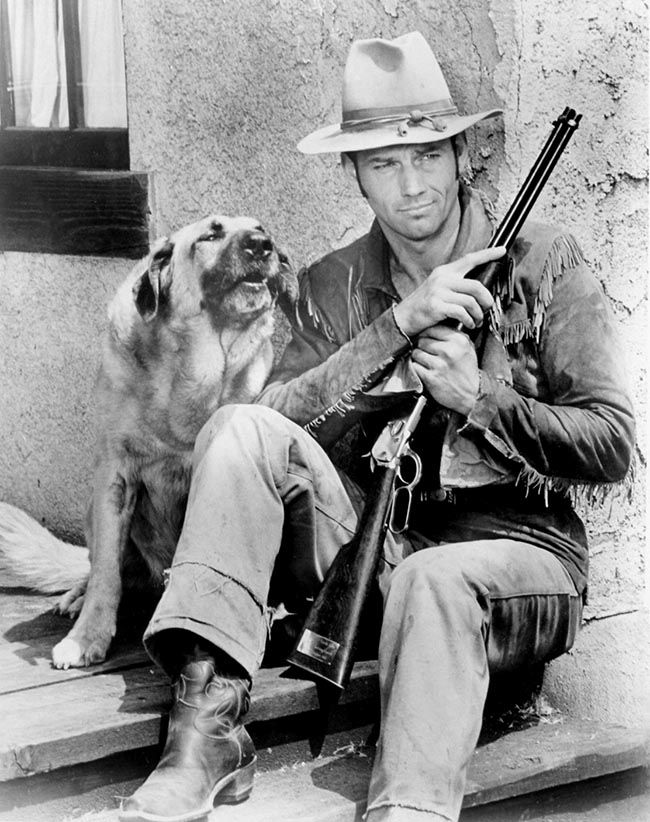
It took 14 years, but John Wayne’s 1953 film Hondo finally made the leap to television in 1967, the TV show taking its inspiration from the movie. Ralph Taeger plays Hondo Lane, a former Confederate cavalry officer, who, along with his dog, looks to help Indians in need following the murder of his Indian wife in the aftermath of the Civil War. The show only lasted one season.
24. ‘The Range Rider’ (1951 to 1953)
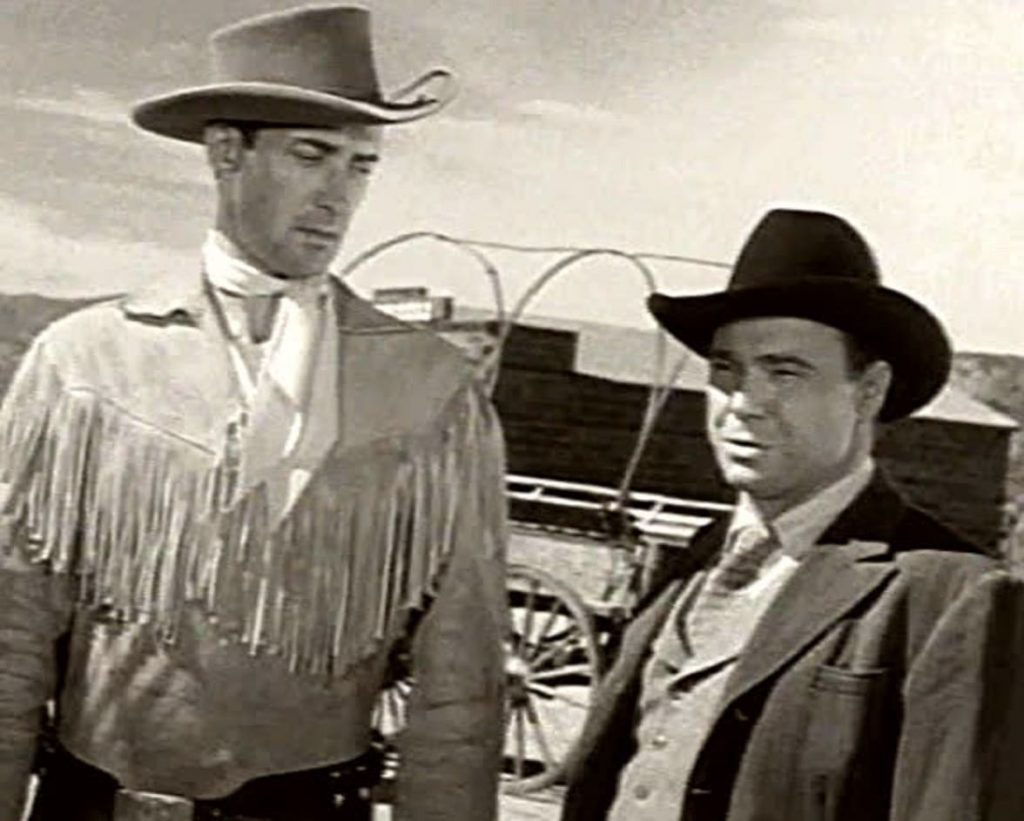
Stuntman turned actor Jock Mahoney plays the title character, who teams up with Dick West (played by Dick Jones) with one mission in mind: to bring justice to the West. Certainly a common enough theme, though this one was deemed an early TV Western classic. A total of 78 episodes were produced between 1951 and 1953. Stated the announcer on the opening narration, “Who could be more at home on the range than the Ranger Rider with his thrilling adventures of the great outdoors, his exciting experiences rivaling those of Davy Crockett, Daniel Boone, Buffalo Bill and other pioneers of this wonderful country of ours.”
25. ‘The Adventures of Rin Tin Tin’ (1954 to 1959)
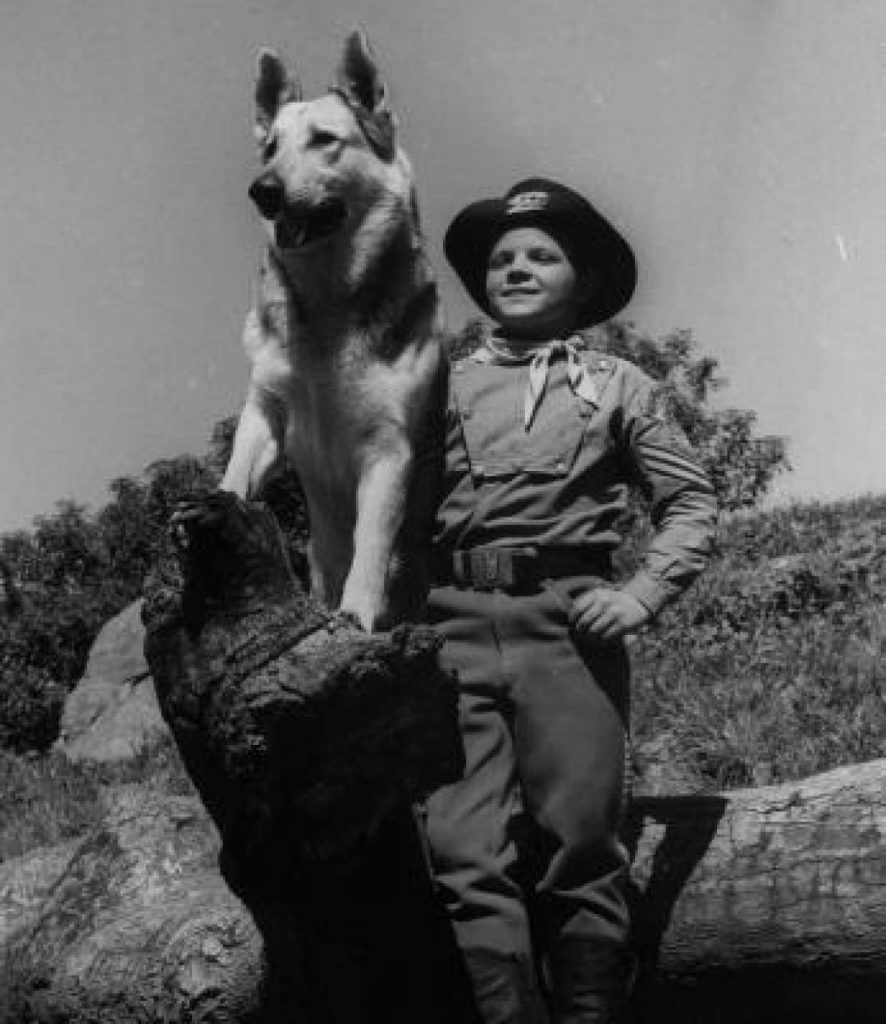
The troops at Fort Apache in Arizona “adopt” a young orphan and his dog, Rin Tin Tin, who they work with to establish order in and around Mesa Grande. Rin Tin Tin was a movie star first before he began “slumming” on TV.
26. ‘Cimarron Strip’ (1967 to 1968)
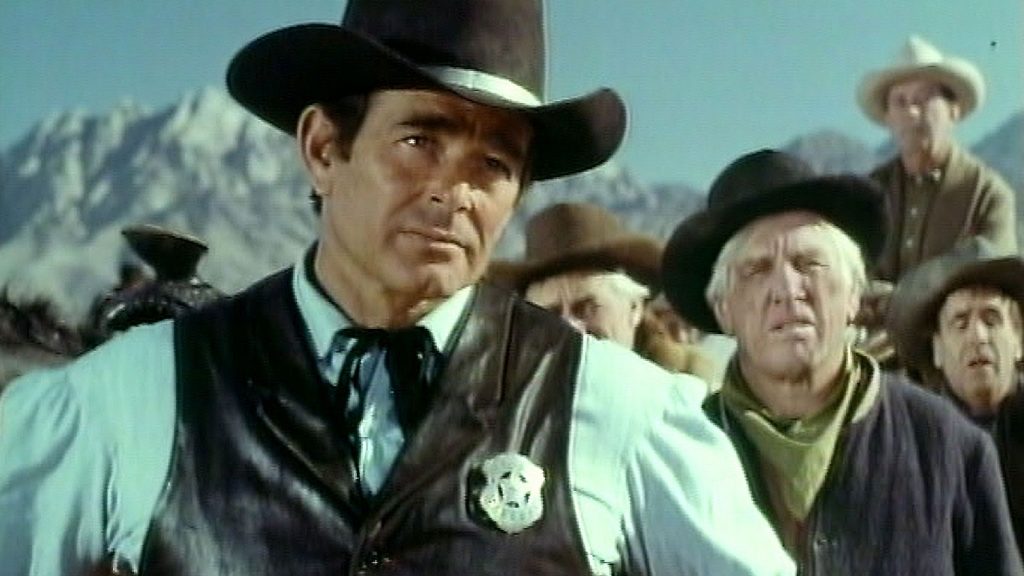
Marshall Jim Crown (Stuart Whitman) operates in the Cimarron Territory, at a time when it wasn’t yet governed by the United States, to try and bring law and order. Magers notes that the show was an attempt by CBS to duplicate the success that NBC was having with The Virginian. “It was a good show,” he offers, “full of action and scenery with top name guest stars. At 90 minutes in color, CBS’ most costly show of the season had a sweeping scope seldom seen in TV Westerns.”
27. ‘Yancy Derringer’ (1958 to 1959)
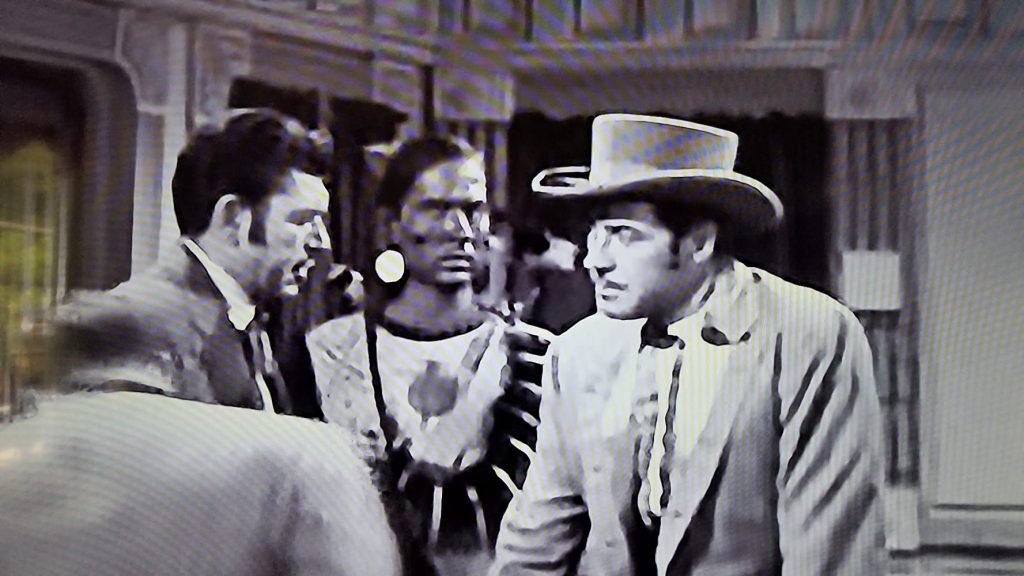
Jock Mahoney, who had previously starred in ‘The Range Rider,’ next starred in Yancy Derringer, a post-Civil War series in which he is an ex-Confederate soldier living the life of a lady’s man and gambler in New Orleans, Louisiana. Or so it seems. In truth, he’s working with his mute Indian friend, Pahoo-Ka-Ta-Wah (X Brands), in service of the city’s civil administrator John Colton (Kevin Hagen) to prevent and expose crime. This little gem of a series aired from 1958 to 1959, but should have gone longer. Concurs Magers, Jock Mahoney hated to see the series end after only 34 episodes. There was, he writes, “every intention, buoyed by fine ratings, of a second season. However, sponsors wanted a comedy and an excellent series fell victim to network politics.”
28. ‘Death Valley Days’ (1952 to 1970)
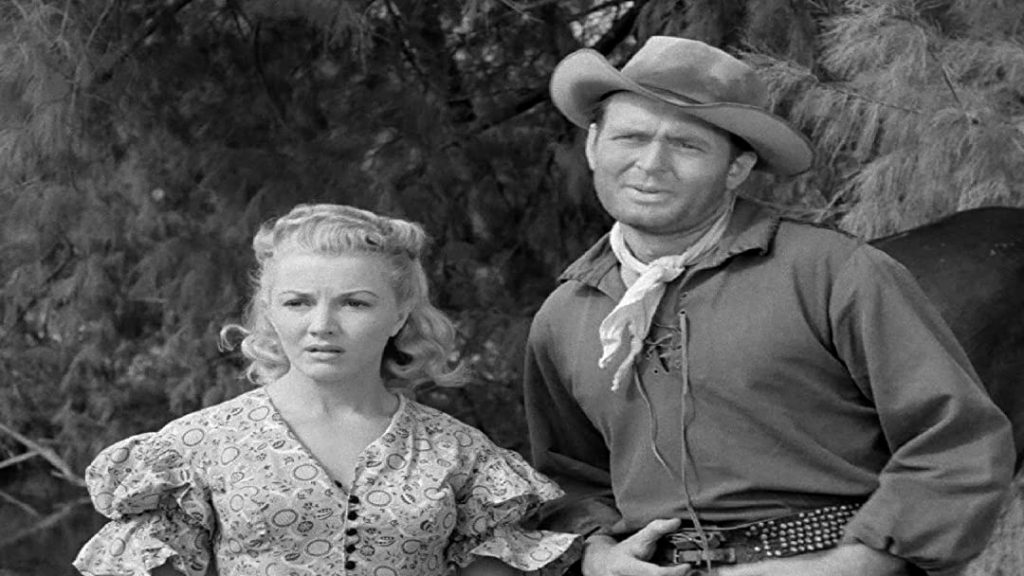
This one was both a radio and television show focusing on true stories of the Old West set in California’s Death Valley. An anthology series, it would feature alternating characters as hosts of the individual episodes. The radio show was broadcast between 1930 and 1945, while the TV series aired from 1952 to 1970 for a total of 18 seasons and 452 episodes.
29. ‘The Americans’ (1961)
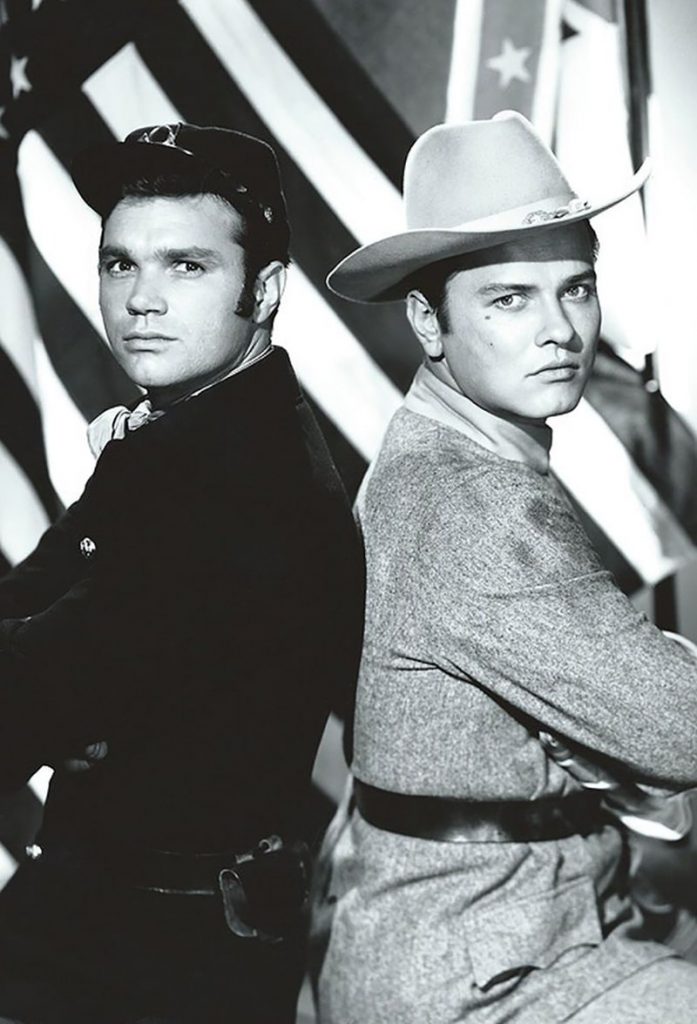
Darryl Hickman and Richard Davalos are brothers fighting on opposite sides of the American Civil War. Airing in 1961, a total of 17 episodes were broadcast. The show was based on the novel The Valiant Virginians, which was published in 1953.
30. ‘Casey Jones’ (1957 to 1958)
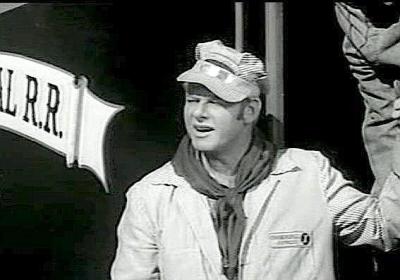
A few years before he became an iconic piece of Classic TV as the Skipper on Gilligan’s Island, Alan Hale, Jr. starred as the title character in this series dealing with the early days of the U.S. railroad system. It aired from 1957 to 1958.
Here’s another solid list of favorite westerns..
RELATED: 37 Behind-The-Scenes Facts About ‘M*A*S*H’ Revealed
